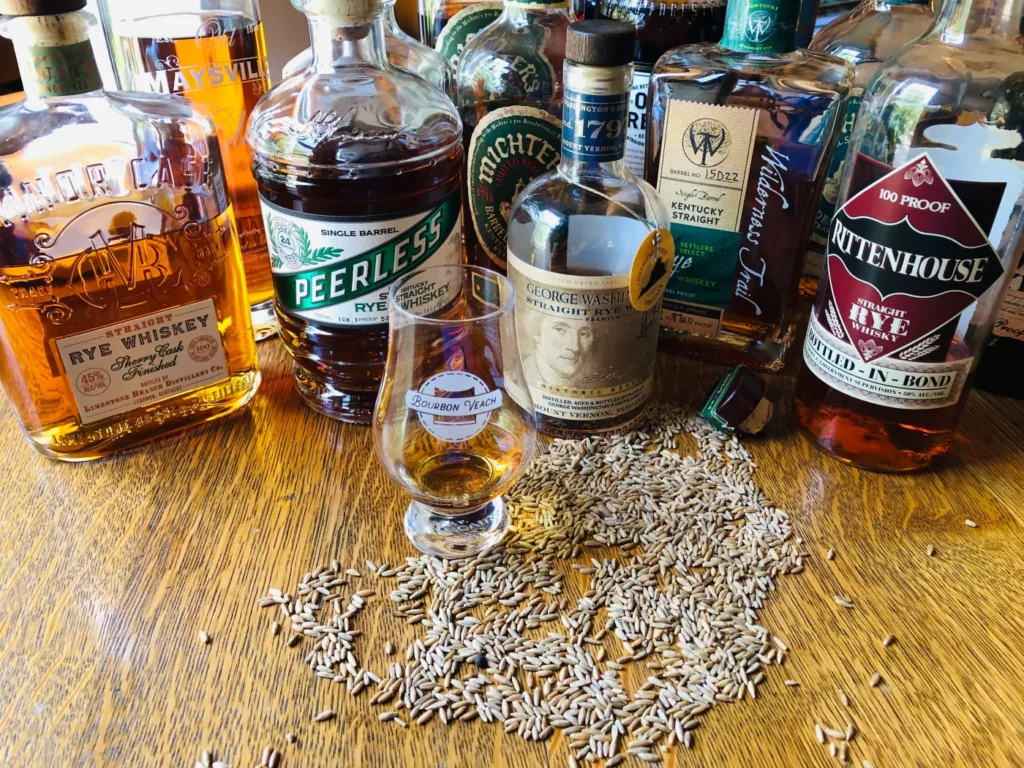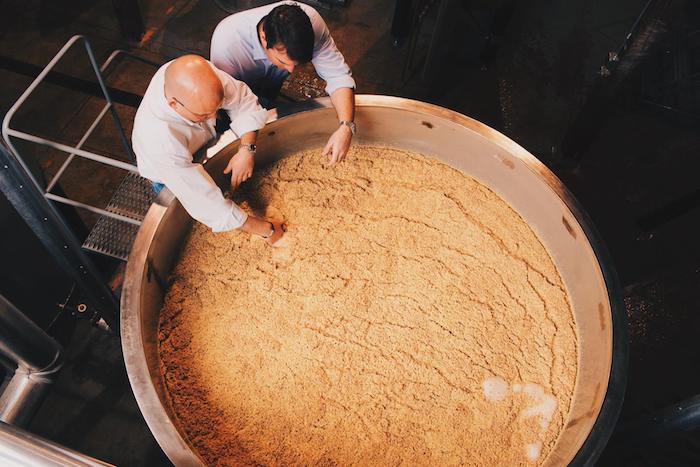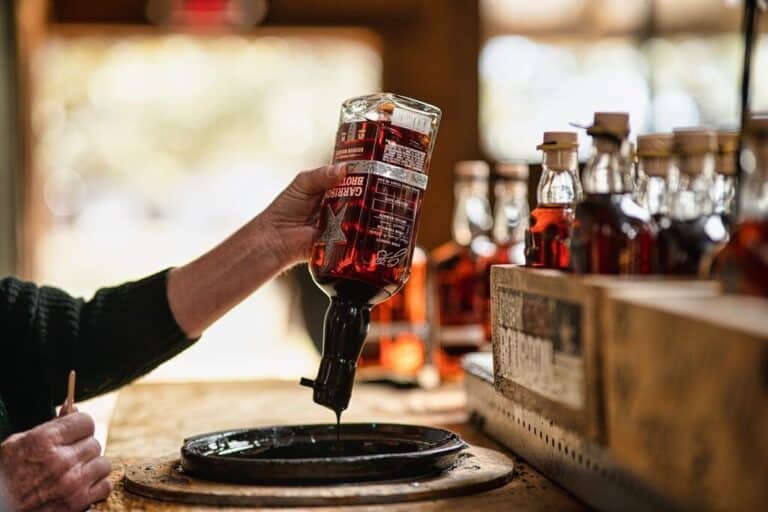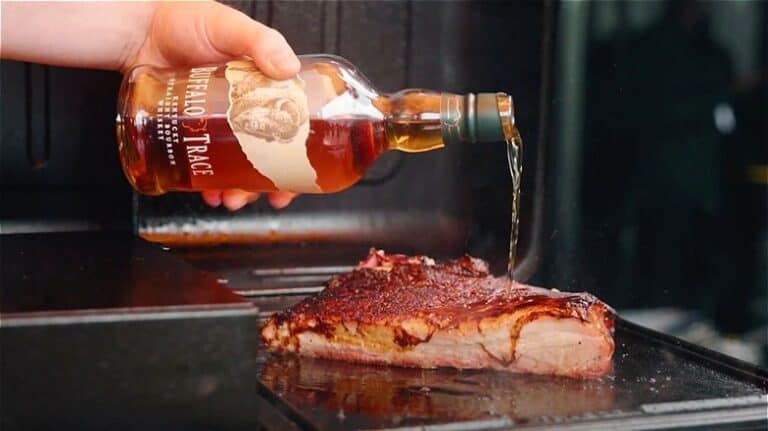Ingredients and Materials Used in Texas Whiskey
Texas whiskey, known for its rich, robust flavors and distinct character, stands out in the world of spirits. The ingredients and materials used in Texas Whiskey production play a significant role in crafting its unique profile. This article delves into the key components that make Texas whiskey exceptional, exploring the grains, water, and yeast that contribute to its distinguished taste.

Grains
Grains are the cornerstone of whiskey production, providing the fermentable sugars needed to produce alcohol. In Texas whiskey, the choice of grains and their proportions significantly influence the flavor and character of the final product.
Corn
Corn is a predominant grain in Texas whiskey, often comprising a significant portion of the mash bill. It imparts a natural sweetness and a full-bodied texture to the whiskey. The high starch content in corn is converted into fermentable sugars during the mashing process, which, after fermentation and distillation, contributes to the rich, caramel-like flavors in the whiskey. The use of locally grown Texas corn enhances the authenticity and terroir of the spirit, giving it a unique regional identity.
Texas is home to diverse corn varieties, each contributing slightly different characteristics to the whiskey. Yellow dent corn is the most commonly used due to its high starch content and availability. However, some craft distilleries experiment with heirloom varieties like Bloody Butcher or Blue Hopi corn, which add unique flavors and a sense of historical continuity to their products.
These alternative corns can introduce subtle differences in sweetness, texture, and even color, providing a richer and more complex drinking experience.

Texas corn also benefits from the state’s unique climate and soil conditions. The hot, dry summers and diverse soil types, ranging from sandy loam to heavy clay, contribute to the distinctive flavors of the corn grown in the region. This local variation can lead to slight differences in the flavor profile of the whiskey from year to year, adding to its unique character.
Rye
Rye adds a distinctive spiciness and complexity to Texas whiskey. This grain is known for its robust and peppery notes, which complement the sweetness of corn. Rye’s contribution to the mash bill varies among distilleries, but it generally adds depth and a characteristic bite to the whiskey. The interplay between corn’s sweetness and rye’s spiciness creates a balanced and nuanced flavor profile, making Texas whiskey stand out in the crowded whiskey market.
In addition to its spicy character, rye also contributes to the whiskey’s body and mouthfeel. The grain has a high level of soluble fiber, which translates into a thicker, more viscous mouthfeel that many whiskey enthusiasts appreciate.
The climate in Texas, with its hot summers and variable humidity, can also enhance rye’s flavor development, leading to a more pronounced spiciness and a richer overall profile.

Rye farming in Texas has been growing, with more local farmers dedicating fields to this versatile grain. The use of Texas-grown rye not only supports local agriculture but also ensures the freshest and most flavorful grain is used in whiskey production. Some distilleries are experimenting with different rye varieties, such as Danko and Abruzzi, to explore new flavor dimensions in their products.
Barley
Barley, typically malted, plays a crucial role in the whiskey-making process. It contains enzymes that are essential for converting starches in other grains into fermentable sugars during mashing. Malted barley also contributes to the overall flavor, adding subtle notes of nuttiness, malt, and a slight smokiness. In Texas whiskey, the inclusion of malted barley ensures a smoother fermentation process and a more refined final product.
Some Texas distilleries are beginning to experiment with locally grown barley, which can add a unique regional twist to their whiskey. The soil and climate conditions in different parts of Texas can impart distinctive flavors to the barley, which are then carried through to the finished whiskey. This emphasis on local ingredients not only supports local agriculture but also strengthens the connection between the whiskey and its place of origin.

The malting process itself can vary, with some distilleries opting for a more traditional floor malting method, while others use modern mechanized malting facilities. The choice of malting process can affect the flavor of the malted barley, with traditional methods often resulting in more complex and nuanced flavors due to the slower, more hands-on approach.
Water
Water is a vital ingredient in whiskey production, influencing both the mashing process and the final product’s taste. The quality and source of water used can significantly affect the whiskey’s flavor profile.
Sources in Texas
Texas is known for its diverse and abundant water sources, from pristine aquifers to clear springs and rivers. Distilleries often source water locally to maintain the authenticity and regional characteristics of their whiskey. The mineral content and purity of Texas water contribute to the distinct taste and mouthfeel of the whiskey. Distilleries may use water from the Texas Hill Country, known for its limestone-rich aquifers, which naturally filter the water and impart unique mineral qualities.
The Guadalupe River, Blanco River, and various underground aquifers provide a consistent and high-quality water source for many Texas distilleries. The unique mineral composition of these sources can subtly influence the whiskey’s final taste, adding layers of complexity and a distinct regional character. Some distilleries also tap into the Edwards Aquifer, known for its exceptionally pure and mineral-rich water, which enhances the overall quality of the whiskey.

Water Quality
The quality of water used in whiskey production is paramount. Texas distilleries ensure their water is free from impurities and contaminants that could negatively impact the whiskey’s flavor. Water quality affects the efficiency of the mashing process, the fermentation rate, and the overall taste of the final product. High-quality water helps create a clean, crisp whiskey with a smooth finish. Some distilleries even go the extra mile by treating their water to achieve the desired mineral balance, enhancing the whiskey’s complexity and depth.
Water treatment processes may include filtration, reverse osmosis, and mineral adjustment to ensure the water meets the exacting standards required for whiskey production. The right balance of minerals, such as calcium and magnesium, can improve the enzymatic activity during mashing, enhance yeast health during fermentation, and ultimately contribute to a well-rounded and flavorful whiskey.

Yeast
Yeast is a crucial microorganism in whiskey production, responsible for fermenting sugars into alcohol. The choice of yeast strain and its management during fermentation significantly influence the flavor and aroma of Texas whiskey.
Strains Used
Different distilleries use various yeast strains, each contributing unique characteristics to the whiskey. Some distilleries prefer using proprietary yeast strains, while others may opt for commercially available options. The choice of yeast strain can affect the fermentation process’s speed and efficiency, as well as the production of different flavor compounds. In Texas whiskey, yeast strains are often selected to enhance the natural sweetness of corn and the spiciness of rye, creating a harmonious balance of flavors.
Proprietary yeast strains are developed and maintained by distilleries to ensure consistency and uniqueness in their products. These strains are often closely guarded secrets, passed down through generations or developed through extensive research and experimentation. Some distilleries might use a combination of yeast strains to achieve a more complex flavor profile, leveraging the strengths of each strain to create a distinctive final product.
Commercially available yeast strains offer a wide range of flavor possibilities, with some strains known for producing fruity esters, while others might enhance spicy or floral notes. The choice of yeast can be a critical decision for distillers, impacting everything from fermentation time to the final taste and aroma of the whiskey.

Fermentation Impact
Fermentation is a critical stage in whiskey production where yeast converts fermentable sugars into alcohol and other by-products that contribute to the whiskey’s flavor. The conditions under which fermentation occurs, such as temperature and duration, also play a significant role. Texas distilleries carefully monitor and control the fermentation process to ensure consistency and quality. The yeast’s activity during fermentation produces esters, phenols, and other compounds that add fruity, floral, and spicy notes to the whiskey. A well-managed fermentation process results in a complex and flavorful spirit, characteristic of Texas whiskey.
The fermentation process in Texas can be influenced by the state’s climate, with warmer temperatures potentially accelerating fermentation and leading to the development of different flavor compounds compared to cooler climates. Distilleries may use temperature-controlled fermentation tanks to maintain optimal conditions and ensure a consistent flavor profile. The duration of fermentation can also vary, with longer fermentations generally leading to a more complex and nuanced whiskey.
In addition to temperature control, some Texas distilleries experiment with open fermentation, where the mash is exposed to the natural environment. This method can introduce wild yeast strains and bacteria, adding further complexity and regional character to the whiskey. However, it requires meticulous monitoring to prevent contamination and ensure the desired flavors are achieved.

FAQs
What grains are commonly used in Texas whiskey?
Common grains used in Texas whiskey include corn, rye, and barley. Corn provides sweetness, rye adds spiciness, and barley contributes nuttiness and malt flavors.
How does water quality affect Texas whiskey?
Water quality is crucial in whiskey production as it impacts the mashing process, fermentation rate, and the final flavor of the whiskey. High-quality, mineral-rich water helps create a clean, crisp whiskey with a smooth finish.
Why is yeast important in making Texas whiskey?
Yeast is essential for fermenting sugars into alcohol. The choice of yeast strain and fermentation conditions significantly
influence the whiskey’s flavor and aroma, adding complexity and depth to the final product.
What role does corn play in Texas whiskey?
Corn is a primary grain in Texas whiskey, providing fermentable sugars that contribute to the whiskey’s sweetness and full-bodied texture. It is often the dominant grain in the mash bill.
Can the source of water impact the taste of Texas whiskey?
Yes, the source of water can impact the taste of Texas whiskey. Local water sources with unique mineral content and purity add distinct regional characteristics to the whiskey.
What flavors does rye add to Texas whiskey?
Rye adds robust and peppery notes to Texas whiskey, complementing the sweetness of corn and creating a balanced, complex flavor profile.
Conclusion
The ingredients and materials used in Texas whiskey, from grains and water to yeast, play a crucial role in defining its unique character and flavor. Each component, carefully selected and managed, contributes to the rich, robust profile that sets Texas whiskey apart. Understanding these elements provides a deeper appreciation for this distinctive spirit and the craftsmanship behind its production.
Disclosure: Our blog contains affiliate links to products. We may receive a commission for purchases made through these links. However, this does not impact our reviews and comparisons. We try our best to keep things fair and balanced, in order to help you make the best choice for you.






